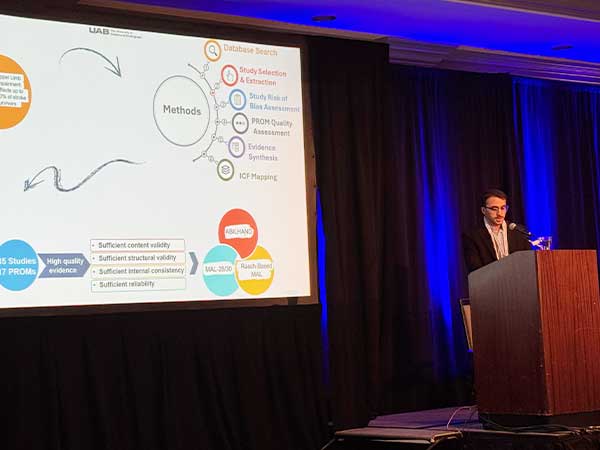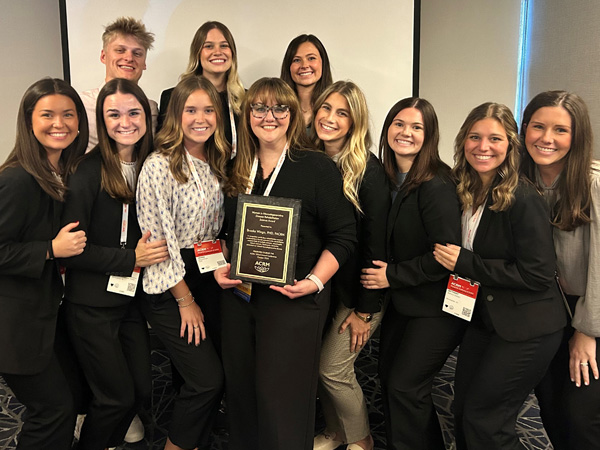 Vu Nguyen, M.D., MBA
Vu Nguyen, M.D., MBA
Chair, Department of Physical Medicine and Rehabilitation
Heersink School of Medicine
Although Dr. Vu Nguyen knew he wanted to be a doctor as early as seventh grade, the self-proclaimed lifelong learner had some of his most impactful professional experiences in the military.
To this day, nearly 25 years after leaving his U.S. Air Force base in Japan, Nguyen carries three simple, yet prescient, areas of leadership that he believes will serve him well in his new role at UAB: humility, efficiency and creative problem solving.
Nguyen began as the new chair of the Department of Physical Medicine and Rehabilitation in UAB’s Heersink School of Medicine on Jan. 1, 2022. He joined after working as a faculty member for over two decades at Atrium Health’s Carolina Medical Center, which is one of the largest healthcare providers in the country. Nguyen received his undergraduate degree in biology from Drake University before earning his master’s degree in business administration from East Carolina University and medical degree from Michigan State University.
While at Atrium Health, Nguyen served as hospital medical director at Carolina’s Rehabilitation Mercy Rehabilitation Hospital. He was also medical director of Carolina’s Stroke Rehabilitation program as well as chief of PM&R at Carolina Medical Center and vice president of the medical staff at Carolinas Rehabilitation. Among his many accomplishments, Nguyen has been a leader in the Association of Academic Physiatrists, the American Board of Physical Medicine and Rehabilitation, the American Academy PM&R, the International Society of Physical Medicine and Rehabilitation Medicine and several others.
In addition to the close relationship UAB’s PM&R department has with the UAB/Lakeshore Research Collaborative, the nationally renowned department carries out its mission of enhancing functional ability and restoring quality of life for people with physical disability or impairments through patient care, research and education.
Like many children, Nguyen wanted to grow up to be a doctor, but not for the reason one might guess.
“In seventh grade, I made the decision I wanted to be a doctor and not necessarily because I was a generous kid who wanted to take care of human beings,” he quipped. “Actually, I was a pretty smart kid who loved school, and it was the only profession that I could imagine as a seventh grader that requires lifetime learning.”
So long before Nguyen suited up in his scrubs or got anywhere near treating a patient, he knew where he wanted to end up. But, along the way, Nguyen took a detour and followed in his father and other family members’ footsteps and joined the military. Nguyen served in the U.S. Air Force Medical Service Corps from 1994-1998, prior to his residency.
Nguyen also points toward much of his focus on efficiency and ability to creatively solve problems as results from his time in uniform. He attributes this to doing tasks such as coordinating with people from different cultures and varying fluency of English and being required to learn multiple positions on base in the event of an emergency. And Nguyen has lived out these lessons in his medical career, working in the fields of stroke rehab, pediatric rehab, TBI, EMG and sports acupuncture – not to mention his time as ER doctor in the Air Force.
Nguyen made the move to UAB because of his insatiable appetite for challenges and growth. “The reason I took this job is because I have a strong desire to tinker, I can’t sit still, I love new challenges,” said Nguyen, who picked up French during the pandemic.
UAB as a whole and PM&R consistently rank among the best of their kind in education, patient care and research. In fact, UAB PM&R has had one of the only national statistical spinal cord injury centers in the country since 1983. It’s one of only 16 traumatic brain injury model systems in the country. And it’s one of only 14 spinal cord injury model systems, which was opened in 1972.
“Ever since I was a medical student, I knew UAB Medical School was strong,” Nguyen said. “It is a sleeping giant.”
Likewise, he views Lakeshore as another massive force that he hopes to further strengthen the relationship with and show the world all the groundbreaking work they collaborate on.
As we look toward the future of medicine and technology, Nguyen sees great potential in the study of what he calls “movement science.” With robotics becoming more and more integrated into medicine, Nguyen believes methods such as neural interface will further develop the infrastructure that UAB and Lakeshore have, and as he learned from camaraderie in the military, it takes a village.
“The one thing I tell my team consistently throughout my career is, ‘My one brain is pretty good, but my one brain plus your twenty is a whole lot better,’” he said. “That’s how I look at leadership. Basically, it’s my job to create the frame, but it’s also my job to work with the team to fill in the walls and fill in the pieces of the frame.”

